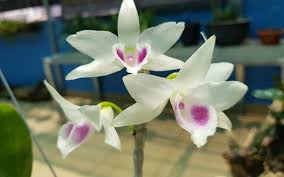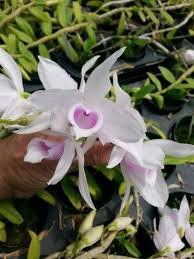
Phalaenopsis orchids, commonly known as moth orchids, are celebrated for their stunning blooms and versatility in various environments. They add a touch of elegance to any garden, whether indoors or outdoors. These orchids are not only visually appealing but also adaptable, making them a popular choice for gardeners seeking to create a beautiful landscape. In this article, we will explore how to incorporate Phalaenopsis orchids into your garden design, providing tips on creating a stunning and harmonious landscape.
## Understanding Phalaenopsis Orchids
Before delving into the landscape design aspects, it is essential to understand the characteristics and growing conditions of Phalaenopsis orchids.
### Characteristics of Phalaenopsis Orchids
Phalaenopsis orchids are known for their:
– **Diverse Color Range**: These orchids come in various colors, including white, pink, purple, yellow, and even multi-colored varieties. This diversity allows for creative combinations in landscape design.
– **Long-lasting Blooms**: With proper care, the flowers can last several months, providing prolonged beauty to your garden.
– **Unique Shape**: The flowers have a distinctive shape that resembles moths, which adds an intriguing element to the landscape.
– **Easy Care**: Phalaenopsis orchids are relatively low-maintenance compared to other orchid species, making them suitable for both novice and experienced gardeners.
### Ideal Growing Conditions
Phalaenopsis orchids thrive in specific conditions, which should be considered when planning your landscape:
– **Light**: They prefer bright, indirect light. Direct sunlight can scorch the leaves, so positioning them in a location with filtered light is ideal.
– **Temperature**: These orchids thrive in temperatures between 65°F and 80°F (18°C to 27°C) during the day and slightly cooler at night. Maintaining a stable temperature is crucial for their growth.
– **Humidity**: High humidity levels (around 50% to 70%) are essential for healthy growth. You can achieve this through misting or using humidity trays.
– **Watering**: Phalaenopsis orchids prefer to dry out slightly between waterings. It’s essential to avoid overwatering, as this can lead to root rot.
## Designing Your Garden with Phalaenopsis Orchids
### Choosing the Right Location
Selecting the right location for your Phalaenopsis orchids is critical for their success in the garden. Consider the following factors:
– **Shade and Sunlight**: Choose a location that provides bright, indirect light. Under the canopy of trees or in a partially shaded area can be perfect for these orchids.
– **Protection from Wind**: Ensure that the orchids are protected from strong winds, which can damage the delicate flowers and leaves.
– **Accessibility**: Place your orchids where they are easily accessible for care and maintenance.
### Creating a Stunning Display
#### 1. Container Gardening
Container gardening is an excellent way to showcase Phalaenopsis orchids. Here are some ideas for creating beautiful displays:
– **Color Coordination**: Choose pots in colors that complement the orchid blooms. Neutral colors, such as white or beige, can make the flowers stand out.
– **Layering Heights**: Use pots of varying heights to create visual interest. Taller pots can be placed at the back or center, with shorter pots surrounding them.
– **Mixing Textures**: Combine different materials for pots, such as ceramic, wood, or metal, to add texture to your garden.
#### 2. Orchid Bed Design
If you have space in your garden, consider creating an orchid bed dedicated to Phalaenopsis orchids. Here’s how to design it:
– **Soil Preparation**: Ensure well-draining soil by mixing orchid potting media (bark, sphagnum moss, or perlite) into the garden soil. This will help maintain the ideal moisture levels.
– **Grouping**: Plant orchids in clusters or groups to create a cohesive look. Use odd numbers (three, five, or seven) for more visually appealing arrangements.
– **Companion Plants**: Incorporate companion plants that thrive in similar conditions, such as ferns, bromeliads, or shade-loving ground covers. These plants can provide contrasting textures and colors.
### Enhancing the Landscape with Accessories
#### 1. Garden Paths and Borders
Creating defined paths and borders in your garden can enhance the overall aesthetic. Here are some ideas:
– **Natural Stone Pathways**: Use natural stones or pebbles to create winding paths that guide visitors through your orchid garden. This design adds a rustic touch.
– **Edging**: Use low-growing plants or decorative stones to edge your orchid beds. This delineation helps keep the garden looking tidy.
#### 2. Garden Art and Features
Incorporating art and features into your garden can elevate its beauty:
– **Sculptures**: Adding sculptures that resonate with the theme of nature can create focal points. Choose pieces that complement the elegance of orchids.
– **Water Features**: Consider adding a small fountain or pond. The sound of water can enhance the tranquil atmosphere and attract beneficial wildlife.
## Seasonal Care and Maintenance
### Winter Care for Phalaenopsis Orchids
Winter can pose challenges for orchids, especially in cooler climates. Here are some tips to ensure your orchids thrive during the winter months:
– **Temperature Control**: Bring orchids indoors if temperatures drop below their preferred range. Ensure they are placed away from cold drafts and heating vents.
– **Humidity Maintenance**: Use humidifiers or pebble trays filled with water to maintain humidity levels indoors. Misting can also help.
– **Watering**: Reduce watering frequency in winter, allowing the potting medium to dry out more between waterings.
### Pest and Disease Management
Maintaining the health of your orchids is crucial for a beautiful landscape. Here’s how to manage pests and diseases:
– **Regular Inspections**: Check your orchids regularly for signs of pests, such as aphids or spider mites. Early detection is key to effective management.
– **Natural Remedies**: Use natural insecticidal soaps or neem oil to treat pest infestations. Avoid harsh chemicals that could harm beneficial insects.
– **Proper Air Circulation**: Ensure good air circulation around the orchids to prevent fungal diseases. Avoid overcrowding plants, and consider using fans if necessary.
## Creating a Themed Orchid Garden
A themed garden can add depth and character to your landscape. Consider the following themes for your Phalaenopsis orchid garden:
### 1. Tropical Paradise
Create a tropical oasis using vibrant Phalaenopsis orchids paired with lush foliage. Here’s how:
– **Plant Selection**: Incorporate tropical plants like palms, ferns, and hibiscus. Their bold leaves and flowers will complement the orchids beautifully.
– **Colorful Displays**: Use a mix of brightly colored orchids to enhance the tropical feel. Consider layering the orchids with taller plants in the back and shorter ones in the front.
### 2. Zen Garden
A Zen garden promotes tranquility and relaxation. Here’s how to achieve this aesthetic with Phalaenopsis orchids:
– **Minimalist Design**: Use fewer plants to create a clean, uncluttered space. Focus on a few stunning Phalaenopsis orchids as focal points.
– **Natural Elements**: Incorporate stones, gravel, and water features to enhance the Zen atmosphere. Create patterns in the gravel for visual interest.
### 3. Butterfly Garden
Phalaenopsis orchids attract various pollinators, making them a perfect addition to a butterfly garden. Here’s how to design it:
– **Diverse Planting**: Incorporate other nectar-rich plants alongside the orchids to attract butterflies. Consider plants like lantana, milkweed, and coneflowers.
– **Color Harmony**: Use orchids that complement the colors of the butterflies in your area. The vibrant blooms will create a visually stunning environment.
## Educating Others Through Your Orchid Garden
Your Phalaenopsis orchid garden can serve as a platform for educating others about the beauty and significance of these plants. Here are some ideas:
### 1. Workshops and Classes
Host workshops on orchid care and cultivation. This can attract gardening enthusiasts and promote community engagement. Topics could include:
– **Orchid Propagation**: Teach attendees how to propagate their orchids successfully.
– **Creating Arrangements**: Show participants how to create beautiful arrangements with Phalaenopsis orchids and other plants.
### 2. Community Engagement
Engage the community by inviting schools or gardening clubs to visit your orchid garden. This can help raise awareness about plant conservation and appreciation for orchids.
– **Guided Tours**: Offer guided tours of your garden, explaining the unique characteristics of Phalaenopsis orchids and their care.
– **Volunteer Days**: Organize volunteer days for community members to help maintain the garden, fostering a sense of ownership and pride.
## Conclusion
Incorporating Phalaenopsis orchids into your garden design can create a stunning landscape that delights the senses and educates the community about the beauty and ecological significance of these remarkable plants. Whether through container gardening, themed designs, or community engagement, these orchids provide endless opportunities for creativity and inspiration. By understanding their needs and aesthetics, you can cultivate a beautiful garden that celebrates the elegance of Phalaenopsis orchids while enhancing your outdoor space. With thoughtful planning and care, your orchid garden will thrive and become a sanctuary of beauty and tranquility, attracting visitors and inspiring a love for nature.


